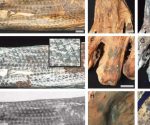RNA, not DNA, is the main cause of acute sunburn

Over the years, we have been told that sunburn damages the DNA leading to cell death and inflammation. But a new study conducted on mice as well as human skin cells has found that is not the full truth. The researchers found that instead of the DNA, the acute effects of sunburn were actually caused due to damage to the RNA. The objective of the study was to describe the impact of UV radiation on the skin and what causes these damages. The researchers found the same skin response to UV radiation exists in both mice and human cells. The results of the study were published in the journal Molecular Cell.
RNA is similar to DNA, but whereas DNA is long lived, RNA is a more transient molecule. A type of RNA, known as messenger RNA (mRNA), functions as the intermediate ‘messenger’ that carries information from DNA to make proteins — the basic building blocks of cellular components.
mRNA damage triggers a response in ribosomes (protein complexes that “read” the mRNA to synthesise protein), orchestrated by a protein known as ZAK-alpha — the so-called ribotoxic stress response — the new study shows. The response can be described as a surveillance system within the cells, which registers the RNA damage, leading to inflammatory signalling and recruitment of immune cells, which then leads to inflammation of the skin.
“We found that the first thing the cells respond to after being exposed to UV radiation is damage to the RNA, and that this is what triggers cell death and inflammation of the skin. In mice exposed to UV radiation we found responses such as inflammation and cell death, but when we removed the ZAK gene, these responses disappeared, which means that ZAK plays a key role in the skin’s response to UV-induced damage,” Dr. Simon Bekker-Jensen from the Department of Cellular and Molecular Medicine and a coauthor of the study said in a release.
Dr. Bekker-Jensen adds: “So you could say that everything depends on this one response, which monitors all protein translations occurring. The cells respond to the RNA damage, realising that something is wrong, and this is what leads to cell death.”
“Our work highlights ribosomes and the ZAK gene as the most proximal stress-signal-sensor pair that kickstarts the well-established acute skin reactions to acute UVB irradiation. These reactions include skin inflammation, epidermal thickening, and programmed cell death. Our findings also indicate that there are different, or at least temporally and phenotypically distinct, roles for the RSR [ribotoxic stress response] and DNA damage signaling in sun-exposed skin, which likely has implications for skin immunity and skin carcinogenesis,” the authors write.
Published – January 18, 2025 10:20 pm IST















